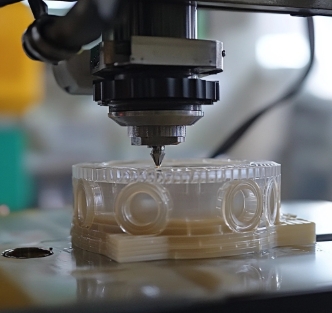There are many types of processing and molding techniques for plastics and their composites. Besides the commonly seen extrusion molding, injection molding, blow molding, etc., the rotary plastic moulding process is also a method for processing plastic products. Rotary plastic moulding, also known as rotomolding or rotational casting, is a plastic molding process.
In the rotary plastic moulding process, plastic raw materials are first added to the mold, which then rotates continuously along two vertical axes and is heated. Under the influence of gravity and heat, the roto molded plastic inside the mold gradually and evenly coat, melt, and adhere to the entire surface of the mold cavity, forming the desired shape, and then are cooled and solidified into the final product.
Material Preparation: First, choose the appropriate plastic raw materials, clean them to remove any impurities, and then dry them to ensure the purity of the raw materials.
Material Loading: Add the pre-treated plastic raw materials into the drum of the rotary plastic moulding machine.
Heating and Melting: Start the rotary plastic moulding machine. The drum begins to rotate while the heating system heats the raw materials, causing them to melt.
Rotary Plastic Moulding: The melted plastic raw materials are subjected to centrifugal force inside the drum, evenly adhering to the inner wall of the drum, forming a uniform plastic film. With the continuous rotation and heating of the drum, the plastic film gradually thickens until the preset thickness is reached.
Cooling and Solidification: When the melt of the product reaches the preset thickness, stop heating, and start the cooling system to cool the product inside the drum, allowing it to harden and set.
Demolding: Once the product is completely cooled and hardened, it can be removed from the drum, resulting in the final rotational molded product.

Low cost of rotary plastic moulding: For products of the same size and specification, the cost of rotational molds is about one-third to one-fourth of that of blow molding and injection molding molds;
Good edge strength of rotational products: Rotary plastic moulding can achieve product edge thickness exceeding 5 millimeters, thoroughly solving the problem of thin edges in hollow products;
The process can accommodate various embedded parts;
Rotational products can have very complex shapes and thicknesses greater than 5 millimeters;
The process can produce fully enclosed products;
Rotational products can be filled with foam materials to achieve insulation;
No need for mold adjustments, and the wall thickness of rotational products can be freely adjusted;
The products are hollow and seamless, with uniform wall thickness, adjustable to provide high strength;
Variety of surface textures available for production, multiple colors can be achieved, UV resistance and anti-aging treatments can be applied, and various stone and wood imitation effects can be achieved.